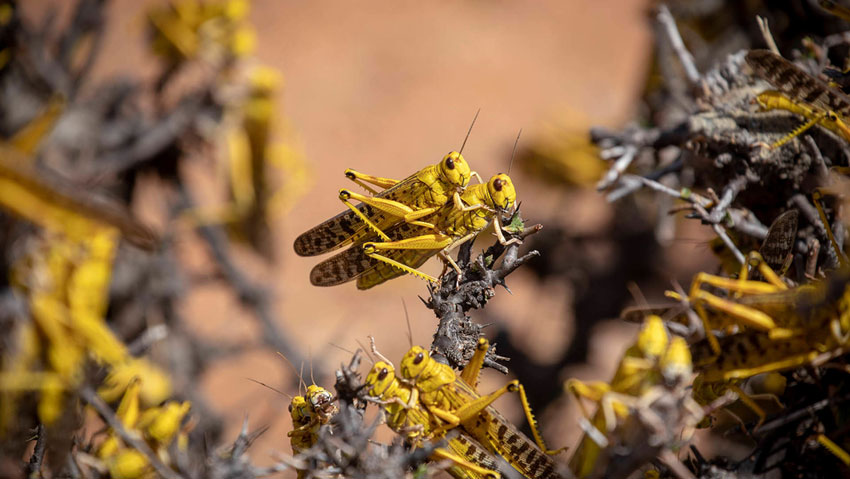JUBA, South Sudan, February 18, 2020: The food supplies of some of the most vulnerable children and families in South Sudan are under threat as massive swarms of desert locusts head towards the country’s border with Kenya and Uganda, Save warns.
The huge plague of locusts, which has already decimated the crops of countries in the Horn of Africa, has been spotted close to Eastern Equatoria on the South Sudanese border with Kenya and Ethiopia. Out of 78 counties in South Sudan, 15% of those in ‘extreme need’ are located in Eastern Equatoria.
South Sudan has been frequently beset by conflict since it gained independence in 2011 and, coupled with drought and flooding, this has led to the displacement of 1.47 million people, who live in temporary camps with basic shelter and often non-existent sanitation. It’s estimated that more than six million South Sudanese people – or just under 60% of the total population – face severe food insecurity and are in need of humanitarian assistance.
Thousands of families already face severe food shortages which lead to death and very high and increasing malnutrition in children – including in Kapoeta North, Budi and Pibor counties which are most likely to be infested by desert locusts.
Save the Children is warning that without coordinated preparedness and control measures for the locusts, as well as an increase in funding for surveillance and community mobilisation, the locusts could contribute to a further drop in nutrition levels. Even without the locusts, it is projected that more than 1.3 million children aged under five will suffer from acute malnutrition in 2020 including close to 292,000 from severe acute malnutrition.
The current locust outbreak is expected to continue until June 2020 due to anticipated ongoing favourable conditions for locust reproduction. Climate shocks remain a driving factor for acute food insecurity in the Horn of Africa and continues to severely affect several countries in the region. Rainfall between March and mid-May 2019 was less than 50 per cent of the annual average across the region, and subsequent, heavy rainfall and flooding impacted nearly 2.8 million people across Ethiopia, Kenya and Somalia affecting and destroyed large swathes of crops.
Save the Children’s Country Director in South Sudan, Rama Hansraj, said:
“Our team in South Sudan has been watching the devastating progress of the desert locusts across the Horn in despair. We fear that the situation in Kenya, Somalia and Ethiopia, which is already serious, will be magnified if the locusts reach South Sudan. Last year we had a prolonged, damaging drought, followed by floods, which displaced thousands of people and destroyed hundreds of homes, and the country is still reeling from years of conflict. A swarm of locusts could be the straw that breaks the camel’s back.
“We are calling on donors to increase their funding for community resilience programming and to support community-led surveillance and preparedness. Critically, more funds are needed for already cash-strapped food programs in South Sudan, and we are calling on the government of South Sudan and humanitarian actors to invest more resources in the agricultural sector to avert the devastating impact of the locusts infestation in South Sudan.”
More than 10 million people already facing severe food insecurity in Crisis (IPC Phase 3) or worse in Ethiopia, Kenya, Somalia and Sudan are located in areas currently affected by the desert locust infestation. A further 3.24 million in Uganda and South Sudan are under threat from expanding swarms.
Do you have a story in your community or an opinion to share with us: Email us at editorial@watchdoguganda.com











